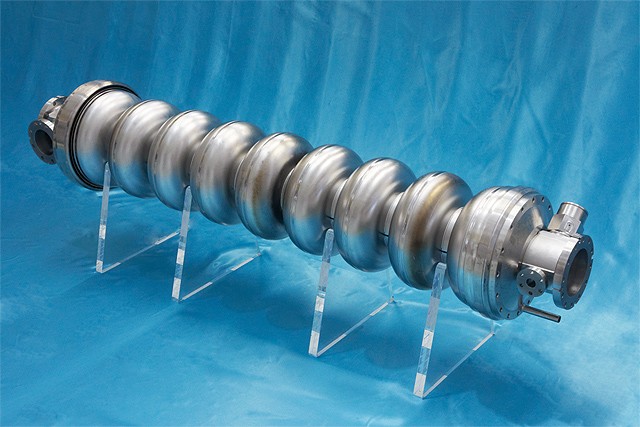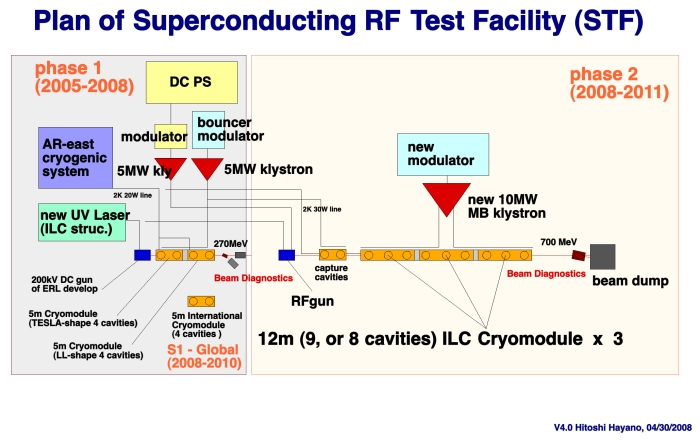Director's Corner
1 May 2008
 Barry Barish |
The art of decision making: STF phase-2 cavity choice
One of the more difficult problems in conducting large-scale science projects is the process of decision making. The ability to make good decisions in a timely way can be an enormous challenge and can differentiate good management from not-so-good management. If you want to make complex technical choices you must balance the gathering of enough information to be scientific and analytical without taking so long that the decisions unnecessarily delay progress on the project. Very recently, a decision was made on the choice of cavities to install in the test facility at KEK called STF phase-2 (Superconducting radio frequency Test Facility). The KEK Linear Collider Project Office reports its decision to adopt "TESLA-like cavities" for STF-2 in a very insightful decision memo. The memo describes the process and motivation for the choice, gives technical comparisons of the options in several ways and analyses the impacts of the different options they considered on integration, time schedule, and even on how they will affect future work and options for ILC cavity development.
The mandate for the ILC Global Design Effort is rooted in the decision to base the main accelerator technology for the ILC on superconducting rather than room temperature radio frequency (RF) acceleration. Since this monumental ITRP technical decision in 2004 we have been constantly confronted with technical decisions, some small and some not so small, some without major consequences and some that have a large impact on how we proceed and on the design itself.
The STF at KEK is a test facility built to develop and operate high-gradient superconducting cavities in a test linac. The motivation of the first phase was to develop the know-how at KEK on ILC superconducting RF technology, following the technology decision (they had been working on warm technology), and specifically to support the development and testing of cavities and cryomodules for a future ILC.
STF phase-2 is being planned to provide a platform for developing and testing a full RF unit, which will serve as a prototype system for the ILC's main linac. The subtleties in the decision of what cavity shape to employ take into account that this decision precedes the actual decisions for the ILC technical design. Therefore, the STF phase-2 will inevitably differ in details and even perhaps in major ways from the eventual ILC design. Nevertheless, the "plug-compatible" approach that has been discussed in previous Director's Corners of 11 October and 28 February should help enable us to test the STF as a prototype ILC linac system, despite the differences, and it may even allow us to change the cavity shape at a later date.
The basic decision that has been reached at KEK for the STF is to adopt TESLA-like cavities that satisfy the GDE's plug compatible requirements. At the same time they also continue the development of low-loss (LL) cavities, because they have the potential to reach a higher gradient. The report gives a set of technical reasons for the decision. But most importantly, they note that since satisfactory gradients have not yet been achieved, the choice was not made on gradient performance. The report also helps set the course for future work by noting several issues that remain to be solved for TESLA-like cavities, including the demonstration of high-gradient performance and adoption of plug compatible guidelines.
I would like to congratulate the KEK LC Project Office for making this crucial decision, for documenting it so well in their decision memo, and for addressing not just the decision itself, but the challenges that lie ahead. I encourage anyone faced with making difficult technical project decisions to read this memo, as it is a very good model for making and justifying important technical choices, even if they are only for a test facility.
The authors of the memo reveal their approach to this decision and their general attitude towards making such decisions when they address the importance of achieving the goals of STF phase-2 in a timely fashion. They very aptly and pragmatically remark that “while recognizing the inevitable technical ambiguities in this type of R&D, we also must recognize our responsibility in maximally preempting such issues with good planning and foresight.”
-- Barry Barish

